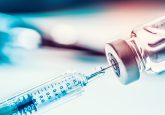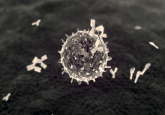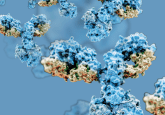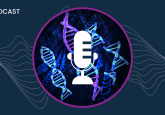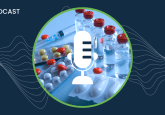Using the Gyrolab® platform for oligo quantification: an interview with John Chappell
In this interview, we spoke to John Chappell, Senior Global Scientific Support Manager at Gyros Protein Technologies (Uppsala, Sweden) about his experience working with the Gyrolab platform for oligonucleotide assays. John discusses the advantages of using Gyrolab for oligo quantification in biological fluids and shares his thoughts on the next steps for these assays.
Podcast transcript
[00:07] Ellen Williams: Hello and welcome to our In the Zone podcast on supporting oligonucleotide therapies using the Gyrolab platform, sponsored by Gyros Protein Technologies. I’m your host, Ellen Williams, and today I’m joined by John Chappell, Senior Global Scientific Support Manager at Gyros. John has around 25 years of experience in the contract research industry, supporting both preclinical and clinical drug development. He has specialized in supporting biological compounds from an analytical perspective and is particularly interested in validation requirements and ensuring that the data generated will be acceptable to the regulatory authorities. Thank you very much for joining me, John.
[00:45] John Chappell: Thank you, Ellen. Looking forward to the discussion.
[00:47] Ellen Williams: So, I guess the first question that I’d like to ask you is why did you start working on oligo assays for Gyrolab?
[00:53] John Chappell: That’s a really good question, actually. I have a long history with doing oligonucleotide analysis. I actually did a research project on this over 25 years ago, where we developed the first hybridization assay using ELISA, but also a radioactive assay. So, I like the thought of trying to fully automate oligo assays onto the Gyrolab platform, particularly where we could potentially do the hybridization in the mixing CD. I wanted the opportunity to try and develop assays on the Gyrolab platform.
[01:21] Ellen Williams: Great. Thank you. So maybe you could comment a little bit on the work that has been done to date on these types of assays?
[01:26] John Chappell: Yes. So initially, we had a few customers developing oligonucleotides. Due to some feedback that we got, we wanted to have some experience in-house, particularly in how to develop these assays. We actually started off by doing a master’s project. We had a student do a master’s project for a six-month or so project, and actually, she did a thesis. Her name was Frida and we got really good data, and she gave us a lot of confidence [in] running these assays on the Gyrolab platform.
[01:59] Ellen Williams: That’s very interesting that a lot of this work actually stemmed from that research project.
[02:03] John Chappell: I mean, this has also led to actually a few customer collaborations. We’ve worked with a number of customers to help them set up oligonucleotide assays. Also, do you know there are a number of customers actually in Asia, in Europe and in the U.S. all working on oligonucleotide assays? And they’re working pretty well on the Gyrolab platform.
[02:24] Ellen Williams: What are the advantages of using Gyrolab for oligo quantitation in biological fluids for bioanalysis?
[02:30] John Chappell: Yes, there’s a number. One, there is the potential to fully automate the assay. As I mentioned, you could actually do the hybridization in the mixing CD, so you don’t actually have to do this manually. This will actually lead to faster run time, but also, the potential for low sample volume as well. We have a number of customers that are developing assays in rare matrices where there’s [a] very limited sample volume, so this is a big advantage of the Gyrolab.
Probably another big aspect, actually, is the potential to change the analytical range by using different CDs. If you go for an offline incubation of the assay, there is a potential that if you want really low sensitivity, you can use a high-volume CD, a 4,000 CD. If you want no sensitivity, you know, you want to measure high concentrations of oligo, you could look at the 2200. There’s a lot of flexibility in terms of assay range, and you can actually have the same assay with different assay ranges just by switching from a different CD. It gives them a lot of flexibility.
[03:41] Ellen Williams: Absolutely, it sounds like there are some really great options there for lots of different sensitivities. So, lots of advantages, but what do you think are the next steps for these assays?
[03:49] John Chappell: Yes. As I said, we’re working with a number of customers. We’re finding that the assays are working very well. One of my concerns, actually, when first setting up oligonucleotide assays —particularly with my experience working with people with an LC–MS background— is that oligonucleotides can be quite sticky, so they can stick to [the] instrument and services. We have found that there’s no real evidence of carryover with these assays, which actually we thought there might be, particularly with using our needles and [being] fully automated. We expect these assays to be adopted by a lot of people doing both preclinical and clinical work, where you have the option of fully automating the assay and I think add a lot of flexibility as I have already mentioned.
[04:33] Ellen Williams: You mentioned there that hopefully these assays will be adopted for preclinical and clinical work, so could you give me some specific examples of where people are using the Gyrolab [platform] for developing oligo assays?
[04:43] John Chappell: Yes, so it’s a number. We have a few people doing preclinical assays in normal sort of serum, plasma, but also looking for rare matrices and tissues as well because oligonucleotide is one area where you’re looking for tissue distribution and making sure the oligo has got into the tissue, the site of action. You can actually have samples from multiple different tissues, as well as your normal plasma or serum. In clinical, generally, it tends to be more plasma or serum samples. Some tissue work, but dependent on obviously the disease area that they’re actually treating. But in general, there’s a wide scope of assays that could potentially be developed for oligonucleotides. There’s also cell and gene therapy as well. There is a new need to measure oligos as part of cell and gene therapy. It’s very much an expanding area, actually.
[05:37] Ellen Williams: Yes, definitely. Oligo quantitation is becoming hugely important for cell and gene therapies. Everyone seems to be very interested in them at the moment. Do you have any final thoughts for us before we finish up?
[05:48] John Chappell: The big thing is, obviously the assay sensitivity is always an important thing, to try and ensure that we have the sensitivity. But something that has become apparent is a big advantage for Gyrolab is actually dynamic range, so the broadness of the range. So the chance to limit the potential for sample dilution. As I mentioned earlier, there [are] options to switch to different CDs. I think as I said there’s a lot flexibility of doing these assays on the Gyrolab platform.
[06:17] Ellen Williams: Great. Thank you very much for sharing your experience with us, John. You can find more resources on the Gyrolab platform in our infographic and short video, which make up the rest of the In The Zone feature, and of course, you can visit Gyros Protein Technologies for even more information. Thank you again, John.
About the Speaker:
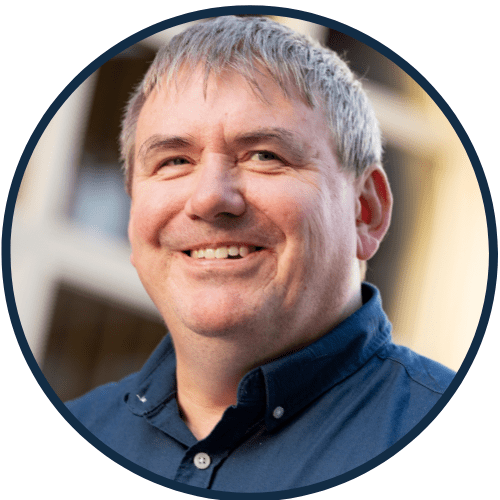 John Chappell
John Chappell
Sr. Global Scientific Support Manager
Gyros Protein Technologies (Uppsala, Sweden)
John Chappell has approximately 25 years of experience in the Contract Research industry supporting both preclinical and clinical drug development. He has specialized in supporting biological compounds from an analytical perspective via pharmacokinetic, immunogenicity and biomarker analysis. He is particularly interested in validation requirements and ensuring that the data generated will be acceptable to the regulatory authorities. He has spoken at many international conferences on topics including oligonucleotide analysis, biomarker analysis, immunogenicity and the analytical support of biosimilar programs. John is currently a senior global Scientific Support Manager for Gyros having been a user of the Gyrolab system for over 10 years, where he is responsible for training the Field Application Team as well as implementing customer collaborations and scientific innovations. As a Fellow of the Royal Society of Chemistry, he was involved in the American Association of Pharmaceutical Scientists (AAPS) Biosimilar Committee, which has published papers on pharmacokinetic and anti-drug antibody assays.
In association with:


